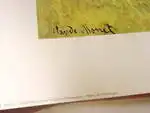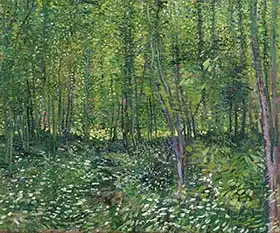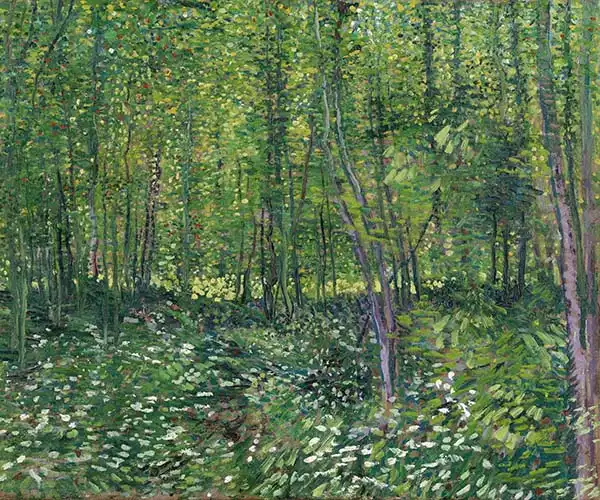About this finishing
Print. The image is printed on the top quality 10-ink HP Z9PS printer on HP matte 270 g / m2 paper. You can choose any size to an accuracy of 1 cm. A margin of 5 cm around the image is added to the size of the motif.


You can find a detailed description about our finishings
here.
Trees and undergrowth
Date:
1887Medium:
oil on canvasLocation:
Van Gogh Museum, Amsterdam, The Netherlands"Trees and Undergrowth" is a painting by
Vincent van Gogh created in 1887. In this work, van Gogh depicts a forest scene with trees and various undergrowth. The painting is notable for its use of color and expressive brushstrokes.
In "Trees and Undergrowth," van Gogh explores the interplay of light and shadow in a natural setting. The trees are rendered with thick impasto, and the undergrowth is depicted with a lively mix of colors, capturing the vibrancy of nature. Van Gogh's
post-impressionist style is evident in the bold and dynamic application of paint.
The painting reflects van Gogh's fascination with
nature and his desire to convey the emotional and spiritual aspects of the natural world. During the late 1880s, van Gogh produced a series of landscape paintings that showcased his evolving style and experimentation with color and form.
Gogh painted picture Trees and undergrowth in 1887. Prevailing color of this fine art print is green and its shape is landscape. This art piece is located in Van Gogh Museum, Amsterdam, The Netherlands. This image is printed on demand - you can choose material, size and finishing.
Vincent Willem van Gogh (1853-1890). Dutch painter belonging to
Post-Impressionism. His paintings (some 900 paintings and 1,100 drawings and sketches) are among the most famous in the world and are sold for exorbitant sums (except for those in our shop).
Parisian Impressionists He lived in Paris from 1886 and was influenced by the use of bright colours - most of his works were painted during this period. In his paintings, Gogh uses contrasting colours (often blue and orange - he said that I want to use colours other contrasts to each of them shone even more to contrast a man and a woman). He was known for his excesses and amputated an ear after the break-up of his friendship with
Gauguin. There is a lot of speculation about this incident (he possibly suffered from heavy metal poisoning from paint that had caused mental problems). In 1890, unfortunately he committed suicide.


